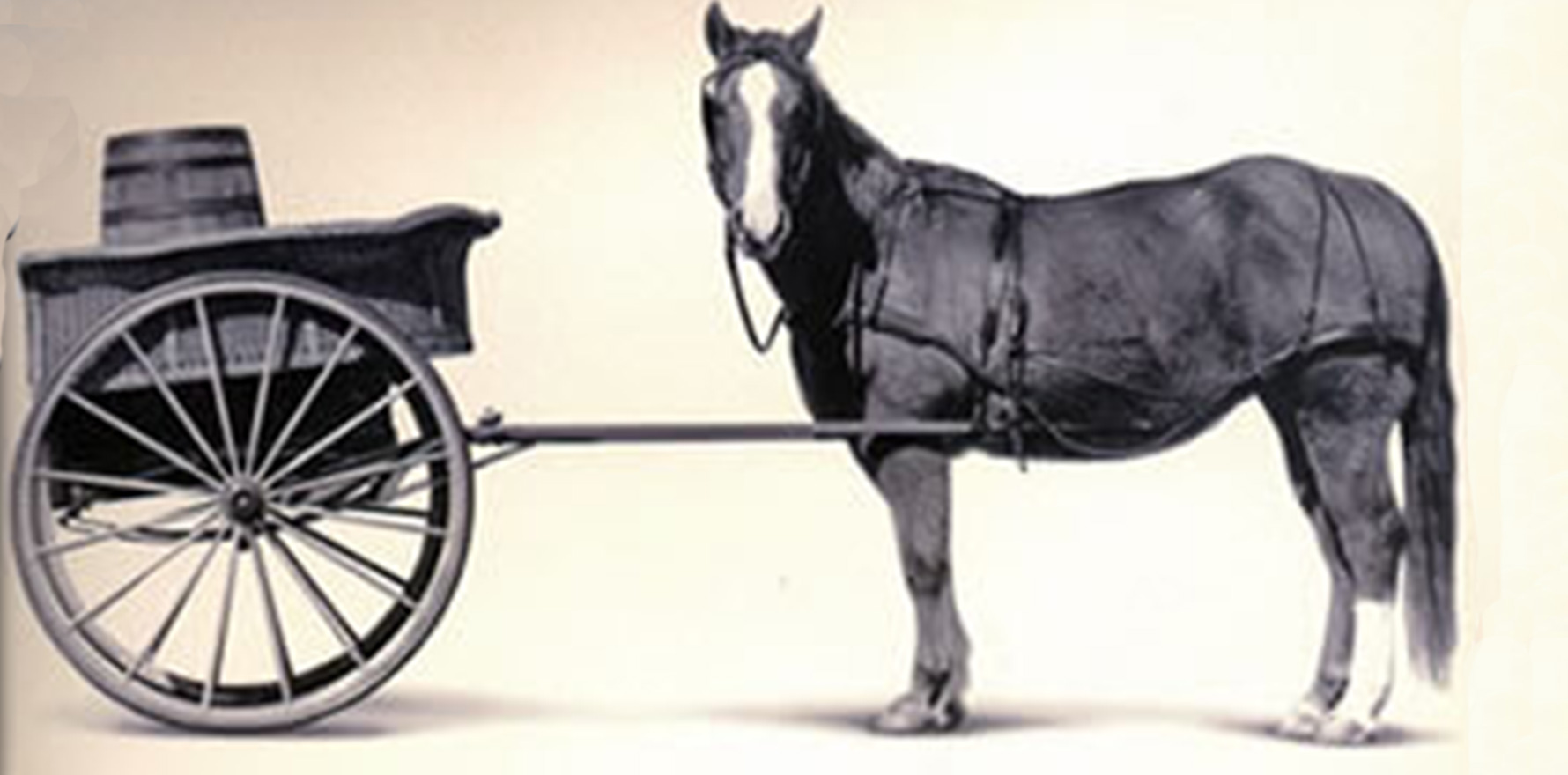Plus: who’s really running PHNs, and is it the states’ turn to get wise on payroll tax?
A damning report from the Australian National Audit Office (ANAO) this week suggested that the Department of Health and Aged Care was not able to prove that PHNs were achieving their objectives because it wasn’t measuring them properly.
More than $1.3 billion a year is a lot of public money to throw into the heartland of general practice without making sure of our return on investment.
DoHAC’s high level take on PHNs is as follows: “Primary Health Networks (PHNs) are independent organisations that we fund to coordinate primary health care in their region. PHNs assess the needs of their community and commission health services so that people in their region can get coordinated health care where and when they need it.”
The ANAO report isn’t going to bolster the PHN image in the eyes of a lot of GPs, a significant proportion of whom don’t see them helping at all in their region.
In a 2018 AMA survey of PHNs, 58% of GPs felt they weren’t improving access to care in their region and a 2021 survey by TMR about 50% of GPs thought PHNs weren’t doing a good job.
None of these stats are particularly flattering, but given the ANAO report, the question is increasingly becoming: is it the the PHNs and their management that is doing things badly and creating this poor engagement with the sector, or is it that the department overseeing them – DoHAC – isn’t managing them consistently for the sorts of outcomes everyone is looking for?
The RACGP’s submission to the ANAO review late last year pretty much said everything that the ANAO outlined this week: “PHNs need to be held accountable through more consistent governance frameworks and external auditing rather than self-reporting. Performance management to date has been insufficient and must be made stronger and more transparent to provide assurance that funding allocated for primary care is being spent appropriately.”
A particularly pointed comment by the college was that PHNs seem to be hyperfixated on service provision rather than ensuring outcomes.
That comment resonated just a week ago in a piece we published in our sister publication, Health Services Daily, by consultant Jay Rebbeck, who works closely with PHNs and is a commissioning expert. He said: “PHNs are sometimes led into retrospectively identifying local needs to justify a predetermined Commonwealth decision to stand up a predefined service model.”
Translation (my translation, not Mr Rebbeck’s): DoHAC comes up with what it thinks it wants to do in a region, then tasks a PHN to commission a needs assessment in the region with the intent of justifying what DoHAC thinks is needed.
This is obviously an upside-down process. Needs assessment should be first but in this dynamic it’s getting reverse engineered. If this is happening on scale it might explain a lot of the problems that people are describing about PHNs and in particular their effectiveness in helping primary care.
We published the following cartoon to make the point and copped quite a bit of flak for it. Almost as though we hit a nerve …

When I attended my first PHN conference late last year I was a bit of a PHN cynic. When I left the conference I was confused. There wasn’t a person in the room over the two days who wasn’t energetic, smart and committed in some way to what they were trying to do.
I got the distinct sense that the problem might be in what they were being asked to do and how, not in the people and the way they went about doing it.
The ANAO report seems to back up such an assertion and underlines a possible reason why after many years of promising to measure PHNs and report on them properly and transparently (we first reported on the idea in 2018), it still hasn’t been done.
SROs’ scare tactics on payroll tax might be about to backfire
The seemingly neverending payroll tax carnival seems to have changed gears in the past two weeks with a couple of important developments suggesting GPs and owners may finally have certainty – at least within a year or two.
The most important development was an indication last week from the Primary Care Business Council that it was prepared to back some practices to take the Victorian SRO to court to defend what we assume are some adverse recent audits.
It’s not entirely clear what is going on behind the scenes, but some corporates believe they have their ducks in a row enough to threaten the Victorian SRO with court action we may be nearing a major turning point in the whole payroll tax debacle.
If a corporate does back one or more of its practices to defend an audit one of three things can happen: they win, they lose, it’s settled.
If the corporates take a case to court and lose, SROs will have another precedent to add to their so far pretty small pile of legal precedent cases – all of which are from a few years back before practices and owners got wise. That wouldn’t be good.
If a corporate went to court and won, we would have our first precedent case representing the opposite of what Thomas and Naaz started: a case in which practices and owners all over the country can look at the detail of how a practice “fought the law, and won”.
Such a precedent would obviously be great for GPs and owners, but pretty much the opposite for SROs all over the country, who until now have been using scare tactics to attempt to convince owners to convert to paying the tax at scale.
The scenario of going to court and winning is very unlikely to happen – not because a corporate wouldn’t win, but because if an SRO gets any whiff they that might lose in court they will settle and try to keep the settlement secret.
Related
We know this because it’s happening already.
A lot of practices have faced off against SROs in a few states, with large amounts in play for owing payroll tax, and the SROs have backed off rather than go to court after practices fought them in preliminary proceedings.
If one or more corporates gets this result, it will still probably represent a tipping point in the whole payroll tax affair.
Even without there being a legal precedent from a court case those corporates will understand what detail they need in their administrative setups to ward off the SROs and will make sure it is applied across all their sites.
After that it surely won’t be that long until word and knowledge spreads.
In a funny way SRO rulings will not matter as much any more because effectively unofficial rules will be in place through these below-the-waterline test cases (cases that never went to court).
One commentator said to me this week about the possibility of one of the corporates backing some of their practices all the way through to the court process: “Break out the popcorn if that actually happens.”
He was implying that the big corporates wouldn’t spend the money nor take the risk if they didn’t now think they had a good chance of winning.
The broader implication, even of the corporates just making the threat, feels like the payroll tax situation is fundamentally starting to shift, rulings or not, and a lot more owners and practices and their accountants and lawyers are going to be a lot less confused about how to act.
That should mean that over time the whole thing settles down and ceases to be the existential threat to general practice that so many people have been suggesting.
The update to the QRO ruling this week in which it provided extensive detail and examples around payment flows felt a little like a last gasp at a tactic that some of the SROs and state governments have been trying.
In one way the QRO ruling has been good because it’s been so comprehensive. But to go to such extraordinary lengths to scare off practices from using automated payment flow solutions with third-party bank accounts – there might be a legal technicality here they are working with – feels like a lot of effort to close every opportunity a practice owner has to navigate their way out of the problem without going broke.
Software vendors and banks providing automated payment solutions are just trying to help by providing low-cost efficient solutions that they believe meet the criterion set out in the previous version of the QRO ruling: namely, that you’re less likely to attract payroll tax if payments go first from the patient to the doctor and then the service fees go to the administrative entity (which the QRO calls a “medical centre” but shouldn’t as it’s confusing).
Queensland has for a while now maintained the facade that it’s just trying to help GPs with this comprehensive ruling. But this addition looks a lot like them saying “just give up guys, there’s nothing you can do that is financially viable other than pay the tax”.
It’s the opposite of trying to help GPs, no matter what fluff the political leaders of each state come out and say about being behind GPs and sorting this problem out.
The SROs have largely just created confusion and fear, an environment in which scared owners will more easily take the bait of amnesty or a detailed ruling and restructure their setups to start paying payroll tax.
Given the further problems any entity would face from the ATO if they did roll over and accept its GPs were employees, you have to hope not many owners are falling for the scare campaigns any more.
State politicians claim to be supporting the GP community while their governments’ revenue offices run cynical and confusing campaigns to press gang as many practices as possible into paying payroll tax.
State governments should wake up to the fact that if even the corporates can work out how to run as service entities rather than command-and-control medical centres, then most GP owners eventually will work it out as well.
And that maybe payroll tax in general practice isn’t the goldmine for state government revenues that obviously a lot of SROs have felt it might be.
Here’s hoping, anyway.
Was the new college CEO a captain’s pick and if so why?
I’ve been trying to get some background on the new college CEO, Georgina van der Water, and on how she got chosen.
First, I couldn’t find anyone with a bad word to say about her – not that I was looking for that, but I was trying to work out what sort of experience in business and leadership she had in order to make the inevitable comparison with Paul Wappett who got booted for reasons which still haven’t been made clear to anyone.
As a general reference from some quite influential and senior GP figures, none of whom are on the board or executive of the RACGP, and some of whom have been critical of college leadership in the past, Ms van de Water was described as a highly capable manager who was great with people, had really good negotiating skills and was well liked.
RACGP board chair Dr Lara Roeske said Ms van de Water brought “extensive experience in senior leadership roles” to the job and had a track record of outstanding stakeholder engagement, which seems to align fairly closely with my unofficial reference check.
As pernickety as this may sound, it’s informative to look at the CV and education of both Mr Wappett and Ms van de Water.
The latter’s CV reads from earliest to latest: operations manager Ashley and Martin (a hair loss clinic); COO Wentwest (a Western Sydney PHN); operational roles in Australia’s largest RTO, GP Synergy, until she became CEO; chief training officer at the RACGP (after the college took over GP Synergy in the early days of the training transition); CEO of the RACGP.
Her education is a Certificate IV from TAFE in “Frontline Management” and then a 12-month online MBA from the Adelaide-based Australian Institute of Business. Neither are particularly prestigious institutions for management training, but of the most effective and relatable senior business people I’ve ever worked with only one had prestigious qualifications (Harvard) and two had no qualifications past HSC.
Paul Wappett’s CV and education runs like this:
Solicitor, Clayton Utz (a top-four law firm); senior legal council, Mobil Oil; HR manager Fuels Division, Mobil Oil (well over a 1000 people in that group); chief commercial officer Western Bulldogs (iconic AFL club, formerly Footscray); executive GM of strategy for CPA (largest membership organisation in Australia by a long way with over 130,000 accountants); CEO of Open Universities Australia; CEO of Australian Institute of Business; CEO of the RACGP.
And his education (he’s a bit of an overachiever): bachelors of law and of commerce, accounting, finance and systems from UNSW; MBA from Melbourne Business School (ranked by the AFR as Australia’s top MBA program, the AIB isn’t in the top 10).
Obviously Ms van de Water has a major skillset in GP training, which is now more than half of what the college does and that’s important. It’s also likely that Ms van de Water had a lot to do with the miraculous training transition the college pulled off.
But Mr Wappett’s experience and education are a long way in front, including the fact that he had worked extensively with both professional membership and training organisations of significant scale.
While Mr Wappett is a white male, what his background brought to the CEO job was the opportunity for quite a bit of diversity of thinking and of a lot of different experiences to meet future college challenges.
What this possibly facile comparison immediately suggests is that the board may not like being challenged by new or outside ideas and that they want someone they understand as a known quantity.
Known quantities can be a lot easier to control, of course.
None of this is any reflection on Ms van de Water, but it might be on the board and it might be worrying for some more discerning college members if they think this change through.
Mr Wappett was an outsider, obviously, with ideas and a passion to challenge the thinking of the board and the members. It looks like it may have brought him undone.
At the time that the board fired Mr Wappett, they said they had started a global search for a new CEO. When you say that you usually employ a big expensive search firm and do what you say – “a global search”.
We asked the college to outline that global search process to us, to send us the key selection criteria they would be using in the search and interview process, how many candidates were identified and interviewed along with Ms van de Water and who interviewed the candidates.
We got this back:
Statement attributable to RACGP Board Chair Dr Lara Roeske
We ran a rigorous recruitment process that was in the public domain.
We have had a positive response about the appointment of Georgina van de Water as our new CEO from government, staff, and members.
In the lead up to International Women’s Day, we are celebrating having strong female leadership at the RACGP.
These were pretty innocent questions we thought which you’d think the board would be prepared to be transparent on, given what happened to the last CEO.
But from this trite answer we don’t even know if the RACGP interviewed anyone else in their “rigorous recruitment process that was in the public domain”.
By public domain I guess the college means they advertised the job.
But after that it’s anyones guess what actually happened.
Without a better answer as to what might have happened it would be easy to conclude that the board may well have just made a “Captain’s pick” of an existing person they were very comfortable with. They could have even had this person in mind when they started becoming unhappy with Mr Wappett.
Was this appointment more or less a done deal all the way through the departure process of the last CEO?
If you think that’s just a conspiracy theory then go ask the board yourself why they won’t tell you whether they even interviewed anyone else for the job.
Does it matter if they interviewed anyone else and didn’t really go through a “global search” because maybe the new CEO is going to be great?
Yes, it does matter.
One point that did come out after Mr Wappett’s departure was that some members of the board very clearly thought that he was too much in the public and political eye and that he should be working in the background.
In that narrative it has been suggested that the board felt that Mr Wappett might even be subsuming the role of the president by being too involved in matters of political lobbying and deal making.
It’s for another time to discuss, but having presidents who are picked the way the college picks them and then having them for only two-year terms is a terrible model for getting stuff done properly in Canberra over the long term. The Pharmacy Guild should have taught the college that lesson a long time ago.
Without any transparency of what happened between Mr Wappett going and Ms van de Water arriving, members are even more in the dark than before.
Do we have a board that wants to run the RACGP instead of a board that wants a CEO to run the RACGP according to the strategy that they oversee and develop?
If so the board is making a fundamental error in how boards are supposed to work in both public and private companies.
It’s corporate governance 101.
The main function of a board is to develop and oversee strategy with the executive team, employ a CEO and oversee the performance of that CEO and his or her management team in the execution of that strategy.
If the board want a CEO they think they can relate to and control, and whom they don’t want to be seen or heard very much, what they really want is what is called an operations manager. What they really want is to act as the CEO.
That’s obviously a problem because the RACGP has no one on its board with decent leadership and management experience to perform such a role.
Mr Wappett made mistakes. His biggest one was not realising he was on the outer with certain individuals on the board and not managing his board.
Just doing a good job according to your riding instructions isn’t enough to keep your job as a CEO, even in a private or public company. You have to manage up and Wappett missed the dynamic that some board members feared they didn’t have the control they obviously wanted. He didn’t manage expectations.
Ms van de Water looks clearly to be a safe and capable pair of hands.
And she might end up great. After all she came on board very early in the training transition process and it was likely she who did most of the work on what was in the end an incredible piece of business transformation in difficult circumstances in a short time.
But why and how she was chosen points to some possible systemic long-term issues for the college and its members which are going to be very hard to break into now.
It’s virtually impossible to sack the board or the board chair or even challenge them from outside the board. These are problems in the college constitution which obviously the board isn’t going to fix.
Given that we have no idea now why Mr Wappett went and how Ms van de Water came, and the board isn’t prepared to ever tell this story, what agency do members think they have in this setup?
What ability to influence the future of the college do they really have, given what we know from this episode of CEO turnover?





